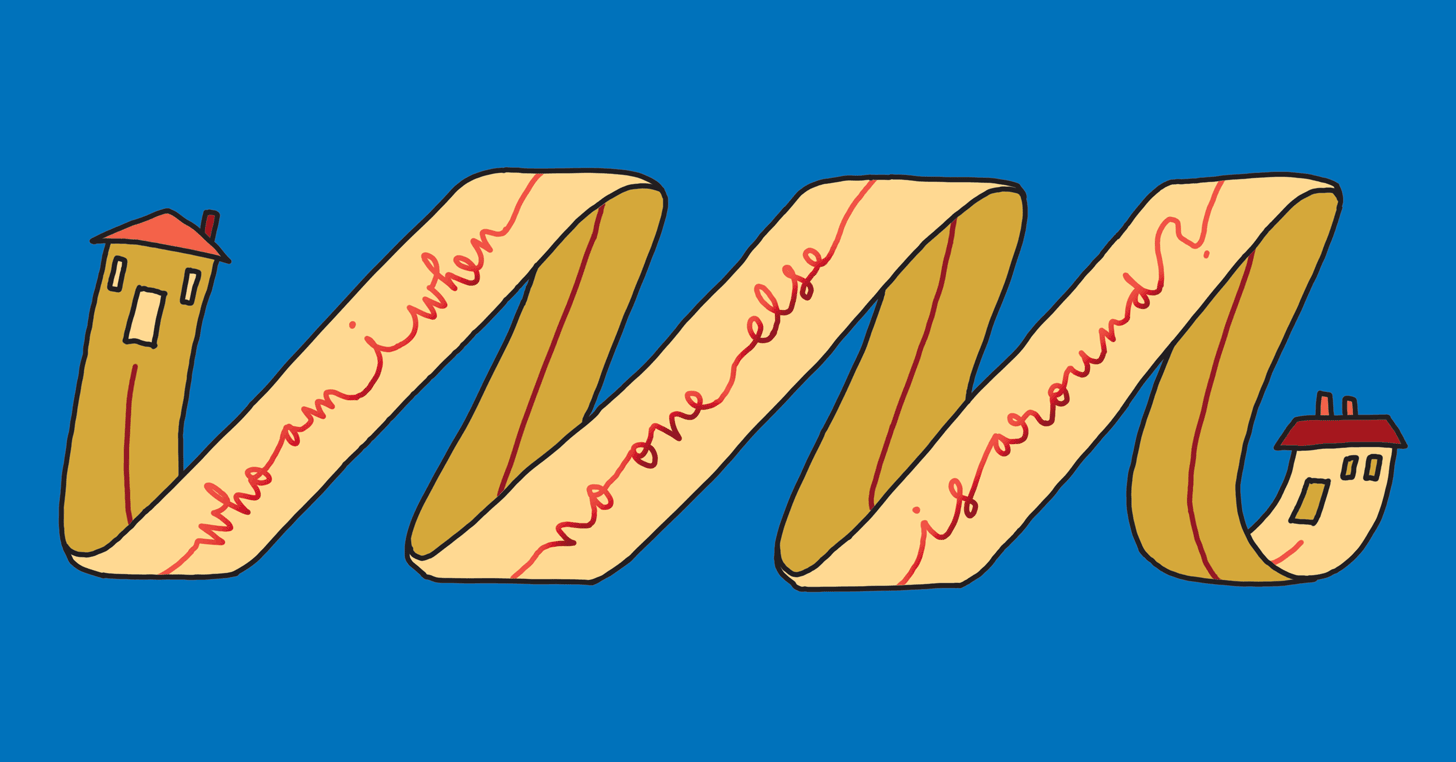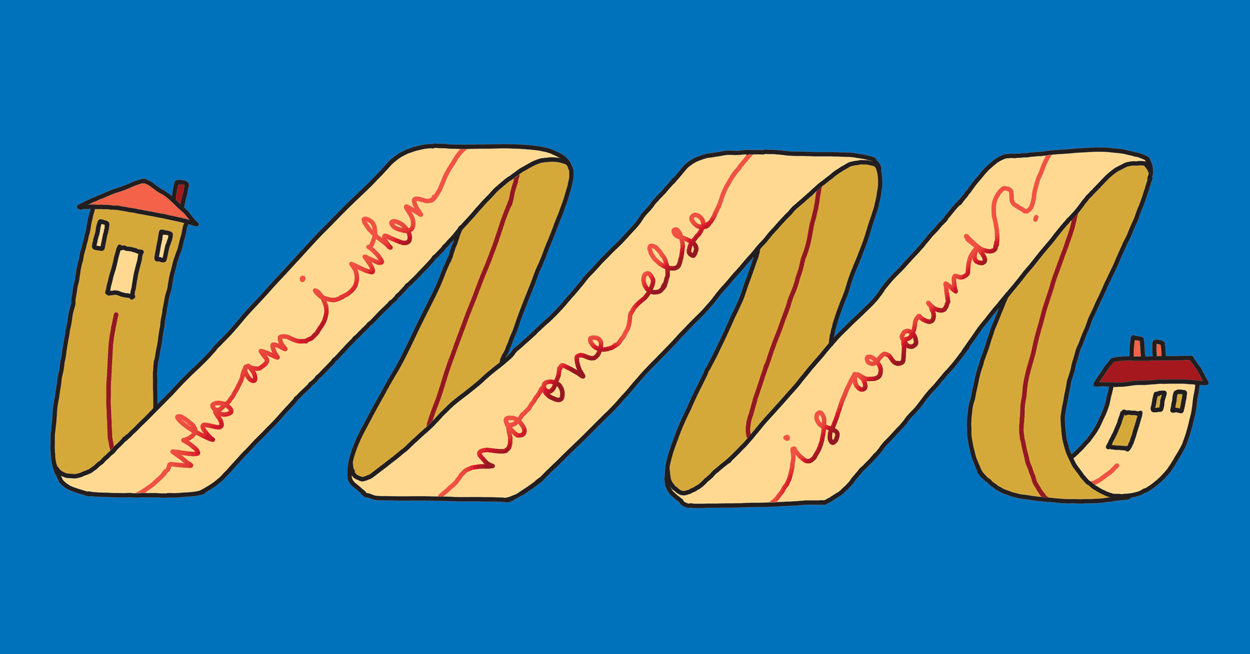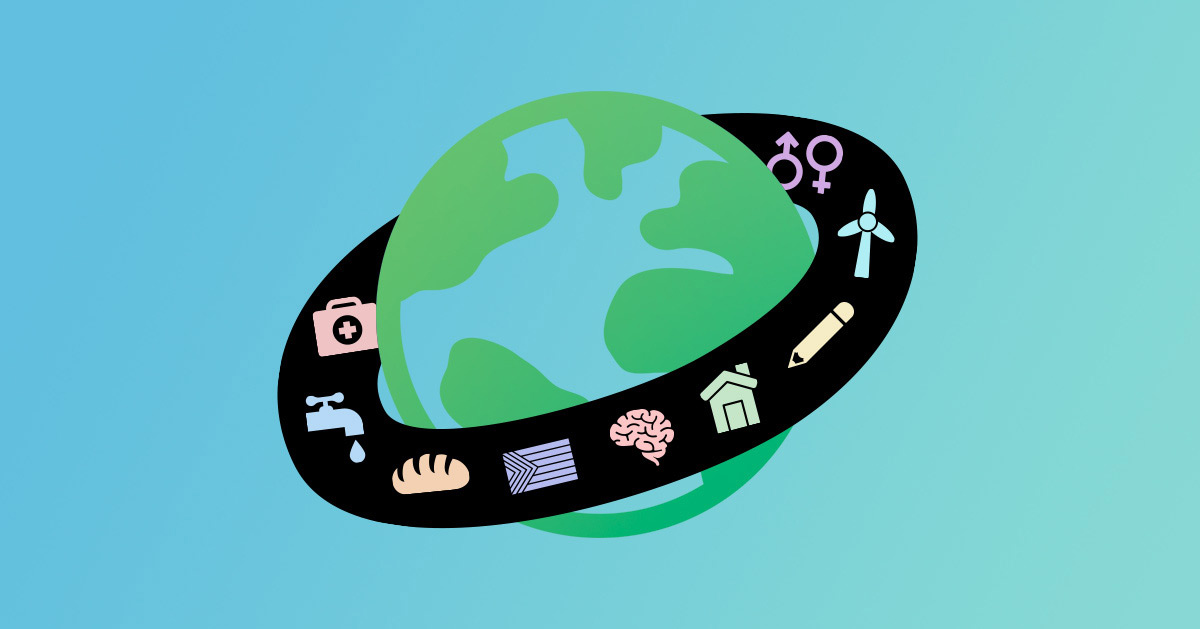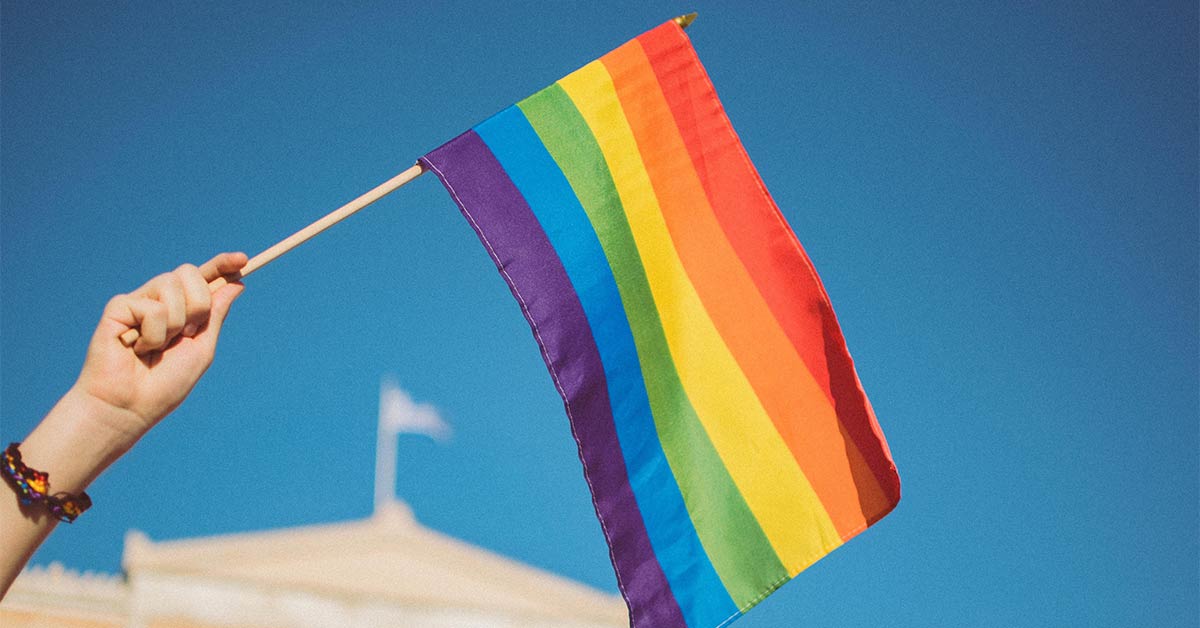“I started the pandemic cisgender, and now I’m getting my boobs chopped off next week,” Lou Flott said in response to my Instagram story question box about experiencing identity changes during COVID-19. “So, yeah, I would say things have changed.”
I am one of the many Pandemic Turned Me Gay case studies and came out as bisexual (along with my partner of nearly a decade) in the summer of 2021. Many of my friends also came out during COVID; waving Pride flags in Instagram posts, quietly changing their pronouns in their social media profiles, and like Flott, even crowd-funding for gender-affirming surgeries at the link in their bio.
While the pandemic undoubtedly rocked the world in tragic, traumatic ways, and we will still be putting together the pieces from the rubble for decades to come, it did leave room for unexpected growth, funneling us all into one major reckoning:
Who am I when no one else is around?

The BBC reports that dating app Bumble conducted a 2020 survey that found 21% of surveyed users said they were planning to “express their sexuality differently… compared to a year ago,” and 14% shifted their sexual desires during the pandemic.
The data shows that folks of all backgrounds experienced these identity twists and turns during the pandemic, but how did that even happen? Surely, the virus did not actually “turn” us gay. (And, for the record: neither did the vaccine.) Did we really just need the time and space to be?
Judith Butler’s gender theory has become a widely studied element of gender and sexuality research, as Butler questions the belief that our gendered behaviors are natural, and posits that they are rather examples of learned performance, imposed upon us by normative heterosexuality, according to Purdue University.
So, when COVID-19 asked us to step off the stage, or as Taylor Swift would sing in her 2020 song mirrorball: “called off the circus, burned the disco down,” folks were left with lingering questions about their gender and sexuality.
“People discover things about themselves that they may have known all along, or were afraid to admit,” Silvia M. Dutchevici, a psychotherapist and founder of the Critical Therapy Center, told Mashable.
Whether folks spent isolation alone, with a close circle, or alongside their trusty telehealth therapists, tools for self-discovery shifted from outside perceptions to inner wisdom.
“The pandemic allowed me the space to move in my own time without needing to meet public standards,” another friend of mine, Scott Fields said, about coming into their non-binary identity. “Changing my name went from a terrifying endeavor to a beautiful thing I had a lot of time to meditate on, practice, and announce to the close people in my bubble. Without the pandemic, I think it would’ve taken me a few more years.”
Not only did COVID-19 provide that juicy time to marinate on these major identity developments, but, ironically, the deadly virus brought a level of personal safety to LGBTQ+ folks. This gift of time and space allowed the fluidity of gender and sexuality to shine on in its magical, unpredictable ways without the threat of public bigotry, violence, or isolation.
We were already alone and afraid of what came next — what else did we have to lose?
“I was able to take the time I needed to get uncomfortable with myself,” Flott said. “I was quarantined with my best friend at the time and felt really safe with her, so I asked her to try out they/them pronouns with me. No one else was around to watch me or judge me while I was exploring more of myself.”
As with revelations about social justice, capitalism, or the self, COVID-19 did not bring a wave of new thinking, but rather, forced us to confront what lay dormant. Sarah Harte, LICSW and director of mental health treatment community The Dorm, told Mashable something similar.
“It’s not necessarily ‘realizing’ it for the first time — although that probably has happened, as well — but being able to hear that quiet voice inside, coming to the point of saying: ‘I do want to live within my true self and my true identities instead of feeling pressure to feel closeted,’” Harte said.
While it’s unclear exactly how trends will bend next, or how the world will embrace the LGBTQ+ community in the coming years, one thing is certain: there is no going back.
This article first appeared in The 2022 Pride Edition of the Goodnewspaper. You can subscribe to the Goodnewspaper to receive a monthly print newspaper filled with positive news.



